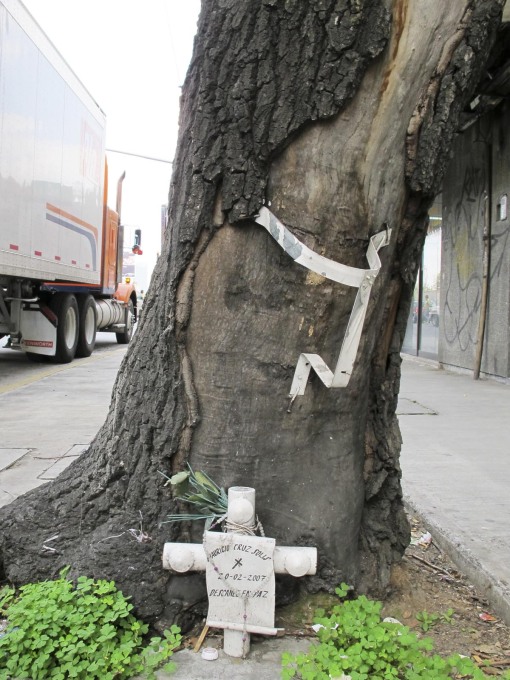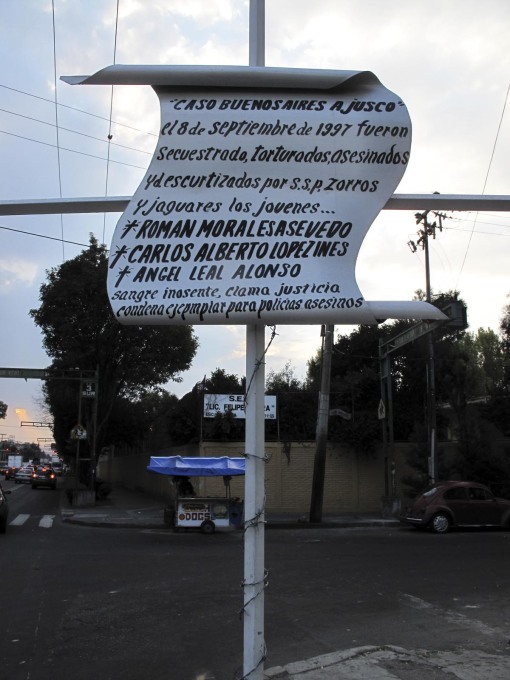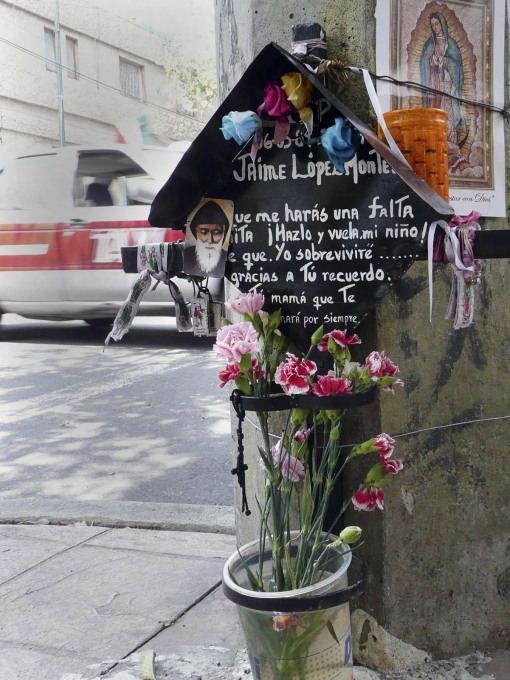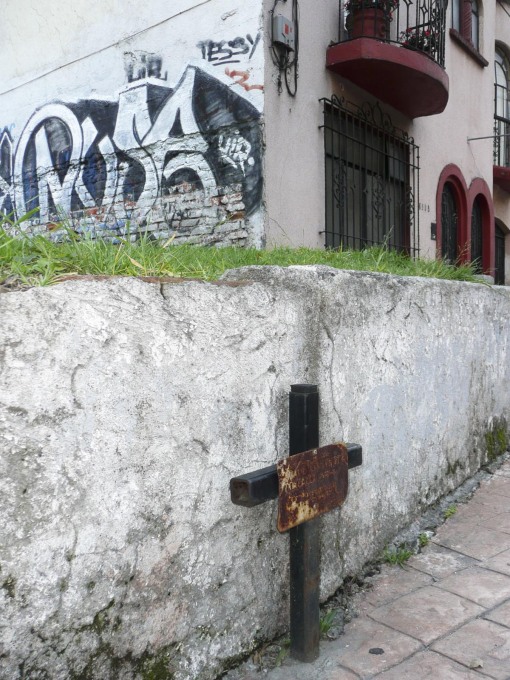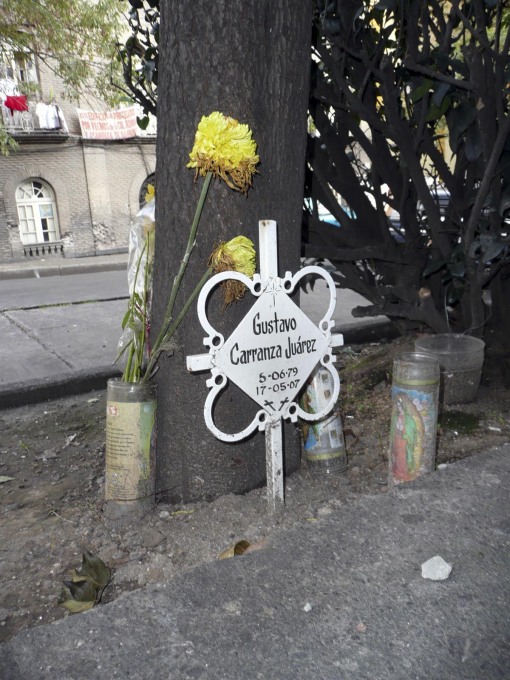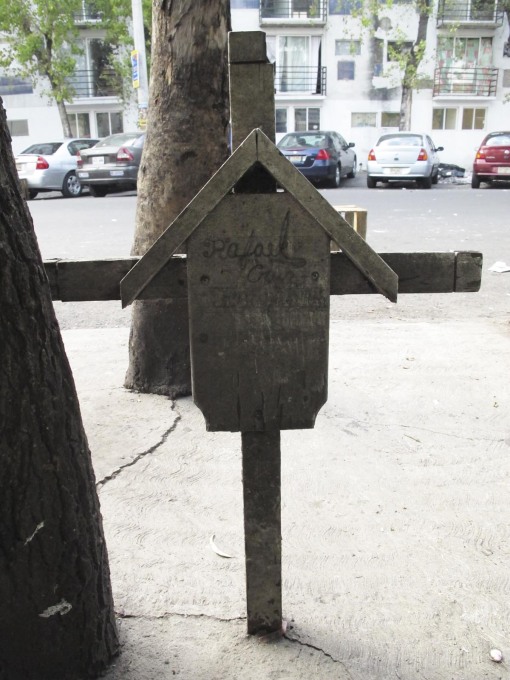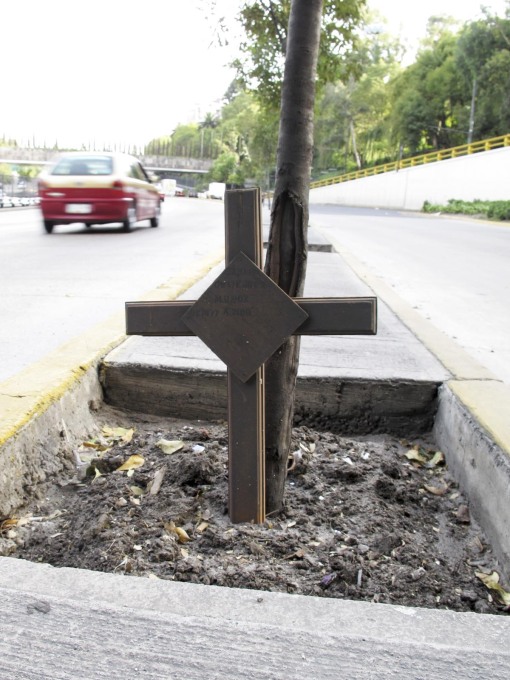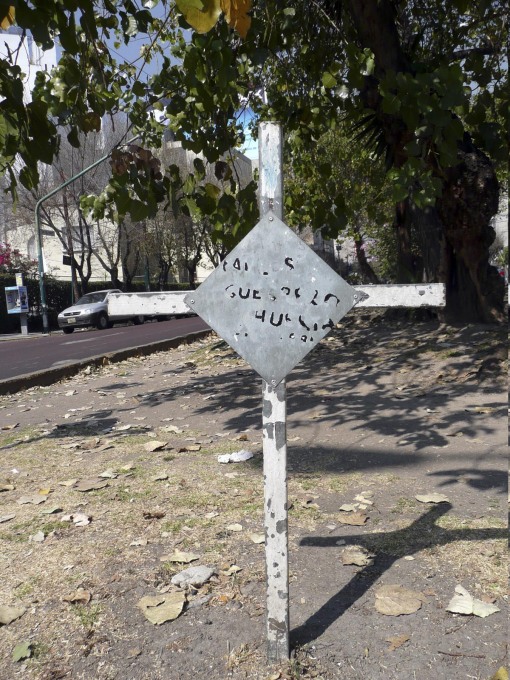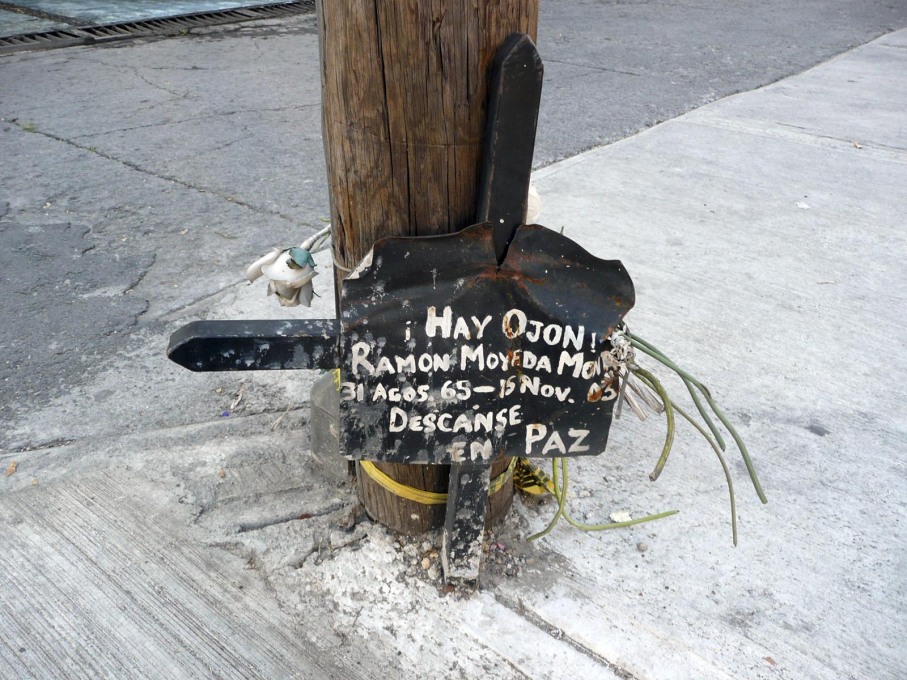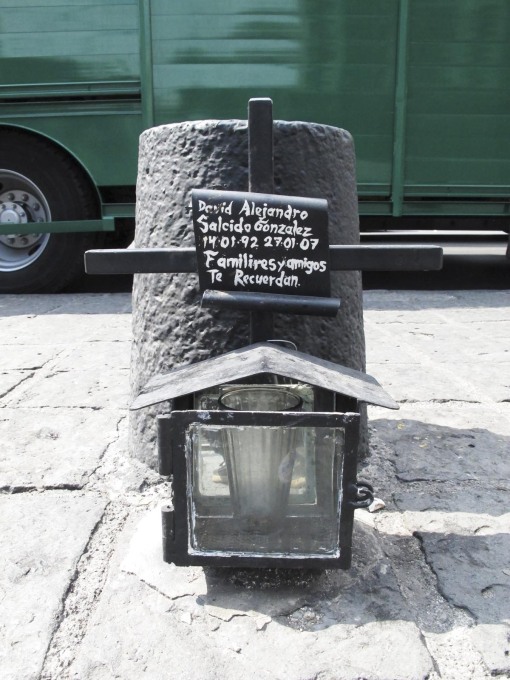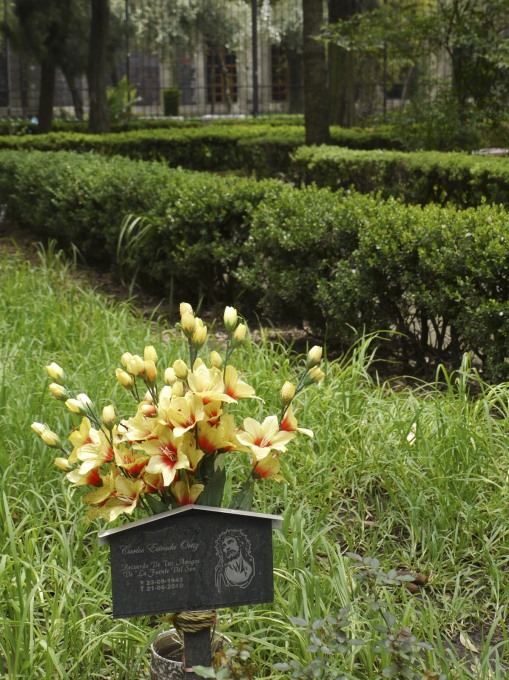A common sight dotted along the sidewalks and kerbs of Mexico City are the modest memorials, many with moving tributes, that mark the places of death of those who have perished on the metropolis’ streets – often violently through accident or murder. Photographer and writer Kurt Hollander pays tribute to these impromptu homemade testaments to lost lives – often the only site of mourning available to family and friends of the deceased, who, too poor to afford an individual plot, commonly have their bodies buried in unmarked, communal graves.
Despite Mexico’s reputation for having a special relationship to death, local newspapers have no obituary section. Instead, when an important businessman, politician, public figure or member of a wealthy family dies, esquelas are placed in the major newspapers. These paid announcements express the survivors’ loss in standardised poetic terms (“…participate with deep pain in the sensitive passing away of…” or “…unite in the pain that overtakes…”), and the design is sombre, usually in black and white, the only illustration a single cross (the printed equivalent of a headstone). The person’s actual death is never referred to directly, the cause of their demise never mentioned, and the only information to be gleaned relates to family relations or place of employment. The corporate-sponsored esquelas often seem more like advertisements for the company that placed the notice (at times their logo appears larger than the name of the deceased) than tributes to the dead.
A much more popular, personal and public display of mourning can be found throughout Mexico City on sidewalks, traffic islands and alongside highways. Handmade crosses, no two the same, commemorating the dead are to be found in public spaces all over the city. More creative and personalised, less expensive and seen by more people than esquelas, they are similar to ones to be found in the least expensive public cemeteries. The crosses, usually made from wood or metal, are hammered into the concrete (even though it is illegal to erect anything permanent in public spaces), thus remaining in place for years and sometimes decades. Handwritten texts (at times describing the life and the cause of death of the dearly beloved), photos of the deceased, candles and flowers often accompany these crosses.
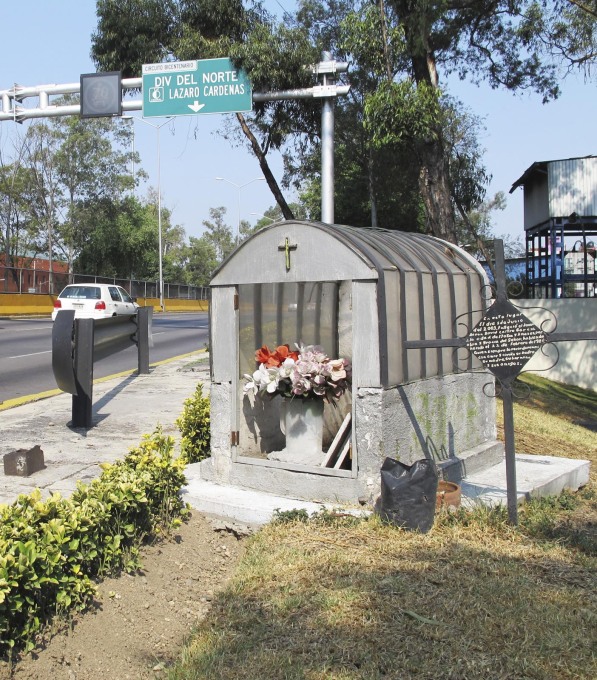
Unlike tombstones that indicate where a person’s bones or ashes lie, these crosses mark the site where someone was killed, most commonly from traffic accidents or homicides. When the authorities arrive, the corpses are taken to the morgue and from there usually to unmarked, common gravesites. Having no grave of their own in which to pass eternity and upon which to place a cross, family members convert the public site of death into their very own private, sacred place of mourning.
Like the memorial murals painted in honour of fallen gang members, these shrines can be variously – or simultaneously – public displays of mourning, testaments to the city’s crime rate, protests against government injustices and warning signals for where social conditions or traffic flow is most hazardous to human life. If a map were to be made of the location of all these crosses, it would faithfully illustrate the geography of violent death in Mexico City. For a culture that prides itself on a close and personal relationship with death, these shrines erected on the streets of the city represent the most public aspect of Mexico City’s architecture of death.
– Kurt Hollander is a writer and photographer, originally from New York City but has lived in Mexico City since the 20th century. In 2012 he published his autobiographical book Several Ways to Die in Mexico City. His photography series on the abandoned city of Tampico, Mexico, was nominated for this year's Prix Pictet.
If you’d like to dwell more on mortality, please check out uncube issue no. 38: Death. Please also read more architecture and urbanism stories from Mexico City in uncube issue no. 23.




